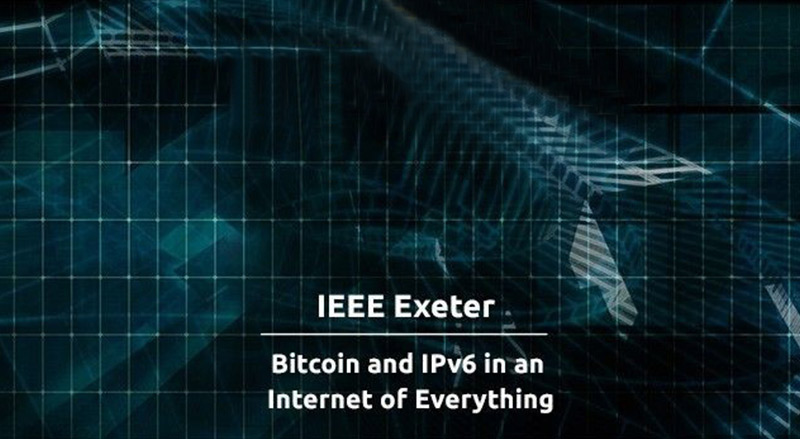Bitcoin and IPv6 are effectively in a symbiotic relationship and will see the boundaries of the Internet pushed to the edge in the coming years. This is because many aspects of modern networking have come about to cope with the rapidly reducing address space available under the IPv4 standard, says Dr Craig S. Wright, Founder and Chief Scientist at nChain.
With billions of devices being connected to the Internet and more coming online every day, the 32-bit address space defined by IPv4 meant that we quickly ran out of unique addresses by which to address individual devices. This was temporarily solved by Network Address Translation (NAT) a method by which a centralised service modifies the IP headers of packets en-route to ensure they reach the correct destination.
However, this is an unnecessary inefficiency when compared with the peer-to-peer communication facilitated by IPv6. IPv6 is the new version of the Internet protocol that enables users to connect directly from other users’ devices—in such a sense that each device on the Internet could have its own address to communicate using a peer-to-peer connection.
Speaking at the recent IEEE event in Exeter, Wright said that this ultimately forms part of the overarching structure of what Bitcoin will be involved with, which is pushing everything to the edge. He added that edge computing changes things from the ‘cloud’ to a ‘fog’ with lots of little endpoints and individuals able to directly communicate with each other.
Although nodes record transactions, they are not supposed to serve as the methodology primarily used for recording transactions and processing. The nodes vote on the ordering of transactions and accept whichever transaction they have seen first.
When Bitcoin was created, the main way to conduct transactions was through IP-to-IP exchanges, Wright said. Bitcoin is a direct communication system, one that enables users to exchange value directly. As such, the system mirrors cash.
There is no such thing as a ‘private’ blockchain
Wright also reiterated that there is no such thing as a ‘private’ blockchain. This is because the security model of Bitcoin isn’t the consensus method but rather the fact that the hash header is (publicly) distributed.
‘Nodes are not meant to be anonymous at all – but users can be. The purpose of doing it this way is that you can have a few entities which come and go who replace the position of an intermediary so that we can have micropayments.
‘Bitcoin is not decentralised for the sake of being decentralised. It is a system designed to deliver micropayments and secure token transfers. It uses a decentralised architecture to achieve that. That means that there is no private blockchain as the security is every hash header being sent to every person.’
Decentralisation is not a political term
Wright said that ‘decentralisation’ is not a political term but is instead about creating resilience.
‘Say there are five nodes in the world, they are all equal and they each earn about 20% of the reward. Then one gets taken out by a hacker, then now you have four going after the same amount of money. When you add those five lost percentage points to those nodes, they are now getting 25% of the total profit, which makes it a really attractive (proposition).
‘Suddenly other people will start running up their own nodes as they want to compete in this industry. Not because of any of the security concepts you hear about but because of economics. There are lots of greedy businessmen who love to make money and because of that they will build businesses to take your money.’
Bitcoin, IPv6 and Edge computing
Wright added that the ultimate goal of decentralisation is edge computing. He noted that other blockchains such as Ethereum are doomed to fail as they rely on running the same instance across the world – this means that the best you have is the weakest link in the chain.
‘If you divide it and have everyone acting on the edge, then all you are doing is verifying and keeping a record of what has happened. Then computation is a sum of everything on the network.’
For this reason, the Bitcoin protocol was always designed with IPv6 in mind, as the power to individually address devices on a global network is a key element to expanding the blockchain’s utility as a payment and data transaction system for a peer-to-peer Internet.
Although nodes record transactions, they are not supposed to serve as the methodology primarily used for recording transactions and processing. The nodes vote on the ordering of transactions and accept whichever transaction they have seen first.
When Bitcoin was created, the main way to conduct transactions was through IP-to-IP exchanges, Wright said. Bitcoin is a direct communication system, one that enables users to exchange value directly. As such, the system mirrors cash.
You can watch Dr Wright’s full presentation below:
